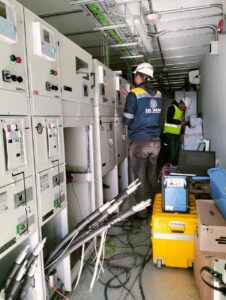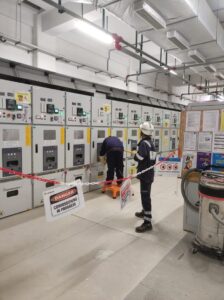In an era where environmental concerns are at the forefront of global discussions, the shift towards sustainable energy solutions has never been more critical. Green energies, encompassing renewable resources like solar, wind, hydro, and geothermal power, are paving the way for a cleaner, more sustainable future. This article explores the significance of green energies, their benefits, and the transformative impact they can have on our world.
The Importance of Green Energies
Green energies are derived from natural sources that are constantly replenished. Unlike fossil fuels, which deplete over time and contribute significantly to environmental degradation, green energies offer a sustainable and environmentally friendly alternative. The transition to green energy is crucial for several reasons:
- Reduction of Carbon Emissions: Traditional energy sources, such as coal, oil, and natural gas, emit large amounts of carbon dioxide (CO2) and other greenhouse gases when burned. These emissions are a leading cause of climate change. Green energies produce little to no CO2, significantly reducing the carbon footprint and mitigating climate change effects.
- Preservation of Natural Resources: Fossil fuels are finite and will eventually run out. Green energy sources, on the other hand, are abundant and renewable. By harnessing the power of the sun, wind, and water, we can preserve natural resources for future generations.
- Energy Security and Independence: Relying on renewable energy sources reduces dependence on imported fuels, enhancing energy security. Countries can leverage their natural resources, such as sunlight and wind, to generate power, fostering energy independence.
Key Types of Green Energies
Solar Power
Solar energy harnesses the power of the sun through photovoltaic cells or solar thermal systems. It is one of the most abundant and accessible renewable energy sources. Innovations in solar technology have made it more efficient and affordable, enabling widespread adoption.
Benefits:
- Zero emissions during operation.
- Low maintenance costs.
- Can be deployed at various scales, from small residential systems to large solar farms.
Wind Power
Wind energy is captured using wind turbines that convert kinetic energy from the wind into electricity. It is a rapidly growing sector, with advancements in turbine technology making it more efficient and cost-effective.
Benefits:
- Clean and abundant energy source.
- Can be installed onshore or offshore.
- Provides a significant amount of energy with minimal environmental impact.
Hydropower
Hydropower generates electricity by harnessing the energy of flowing or falling water. It is one of the oldest and most widely used forms of renewable energy. Large-scale hydroelectric dams and small-scale hydro projects both contribute to global energy needs.
Benefits:
- Reliable and consistent power generation.
- Provides energy storage and grid stability.
- Low operational costs once established.
Geothermal Energy
Geothermal energy utilizes heat from the Earth’s interior to generate electricity or provide direct heating. It is a reliable and sustainable energy source, particularly in regions with high geothermal activity.
Benefits:
- Constant and reliable power supply.
- Low emissions and environmental impact.
- Can provide both electricity and direct heating solutions.
The Impact of Green Energies
The widespread adoption of green energies has far-reaching impacts on the environment, economy, and society:
- Environmental Benefits: Transitioning to green energies reduces pollution, conserves natural habitats, and promotes biodiversity. It also mitigates the adverse effects of climate change, such as extreme weather events and rising sea levels.
- Economic Growth: The renewable energy sector creates jobs and stimulates economic growth. From manufacturing and installation to maintenance and research, green energy industries offer numerous employment opportunities.
- Health Improvements: Reduced air and water pollution from green energy sources lead to better public health outcomes. Fewer emissions mean lower incidence of respiratory and cardiovascular diseases.
- Social Equity: Green energy projects can be designed to benefit marginalized communities, providing access to affordable and reliable energy. This contributes to social equity and improved quality of life.
Challenges and the Way Forward
While green energies offer numerous benefits, there are challenges to overcome:
- Intermittency: Renewable energy sources like solar and wind are intermittent, requiring efficient energy storage solutions and grid management to ensure a stable power supply.
- Initial Costs: The upfront investment for renewable energy infrastructure can be high. However, long-term savings and decreasing costs of technology are making green energies more accessible.
- Policy and Regulation: Supportive policies and regulations are essential to promote the adoption of green energies. Governments must implement incentives, subsidies, and regulatory frameworks to encourage investment in renewable energy projects.
Conclusion
Green energies are not just a trend; they are a necessity for a sustainable future. By embracing solar, wind, hydro, and geothermal power, we can significantly reduce our environmental impact, enhance energy security, and foster economic growth. The transition to green energies requires collective effort from governments, industries, and individuals. Together, we can pave the way for a cleaner, greener, and more sustainable world.





